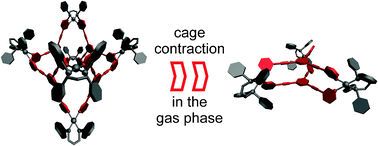Getting a grip on CO2 capture: Canadian researchers 'see' how to capture CO2
The ability to keep CO2 out of the atmosphere to help prevent climate change is a global issue. The challenge is to use materials that can capture the CO2 and easily release it for permanent storage. Researchers at the University of Calgary and University of Ottawa have provided deeper insights to CO2 capture by "seeing" the exact sites where CO2 is held in a capture material. Their discovery, published in Science, will allow scientists to design better materials to capture more CO2.
The findings can be likened to learning about a better fit between a baseball glove and a ball in order to improve performance. Different gloves fit different size of balls better and it's easier to catch a ball with a glove that is moulded to it. In the case of CO2 capture, think of the ball as the CO2 and the glove as the material that houses the CO2.
"We have pinpointed where the CO2 molecule is held by direct experimental visualization (X-ray crystallography) and, through computer modeling, we can see how every 'finger' contributes to holding the CO2 in place," says co-author Dr. George Shimizu, a chemistry professor in the Faculty of Science at the University of Calgary whose research was funded by the University of Calgary's Institute for Sustainable Energy, Environment and Economy and NSERC.
What's also significant about this discovery is the exceptional correlation between experiment and computer simulation. Computer simulations can now be more confidently applied to predict the CO2 capture ability of materials on the computer before they are made in the laboratory. "The detailed computational analysis of how CO2 is captured in this material provides new directions for designing improved materials," says Dr. Tom Woo, an associate professor in chemistry and Canada Research Chair at the University of Ottawa, who is a co-author of the work along with his graduate student Peter Boyd.
This research may be used for a variety of applications. "We could ultimately see this process helping to mitigate greenhouse gas emissions on the top of coal burning flue stacks or it could be used to help remove CO2 from unconventional natural gas reservoirs," says Dr. Ramanathan Vaidhyanathan, the paper's first author and research associate at the University of Calgary.
Current methods of CO2 capture take place by bubbling CO2 through a liquid solution which strongly binds to the CO2, a process called amine scrubbing. The major downside of this technology is that to recycle to the absorbing solution and release the CO2, heating to over 100 C is required. Most estimates say to capture CO2 from a coal-fired power plant by this technique would cost about one-quarter of the plant's energy production.
Most read news
Topics
Organizations
Other news from the department science

Get the analytics and lab tech industry in your inbox
By submitting this form you agree that LUMITOS AG will send you the newsletter(s) selected above by email. Your data will not be passed on to third parties. Your data will be stored and processed in accordance with our data protection regulations. LUMITOS may contact you by email for the purpose of advertising or market and opinion surveys. You can revoke your consent at any time without giving reasons to LUMITOS AG, Ernst-Augustin-Str. 2, 12489 Berlin, Germany or by e-mail at revoke@lumitos.com with effect for the future. In addition, each email contains a link to unsubscribe from the corresponding newsletter.





















































